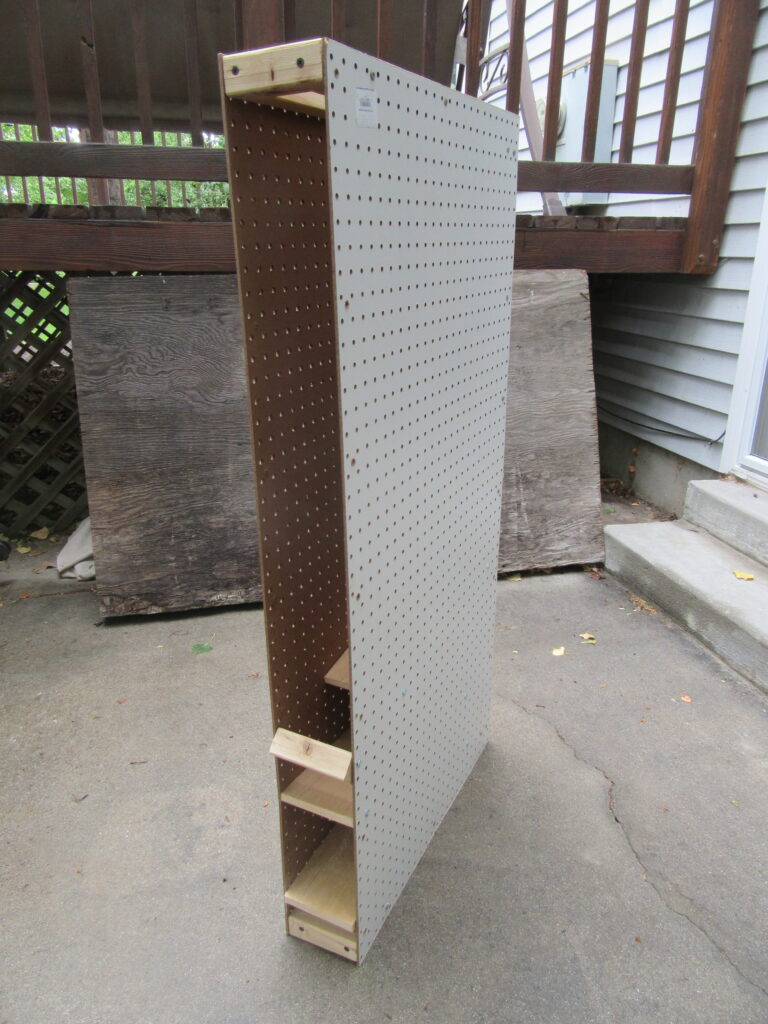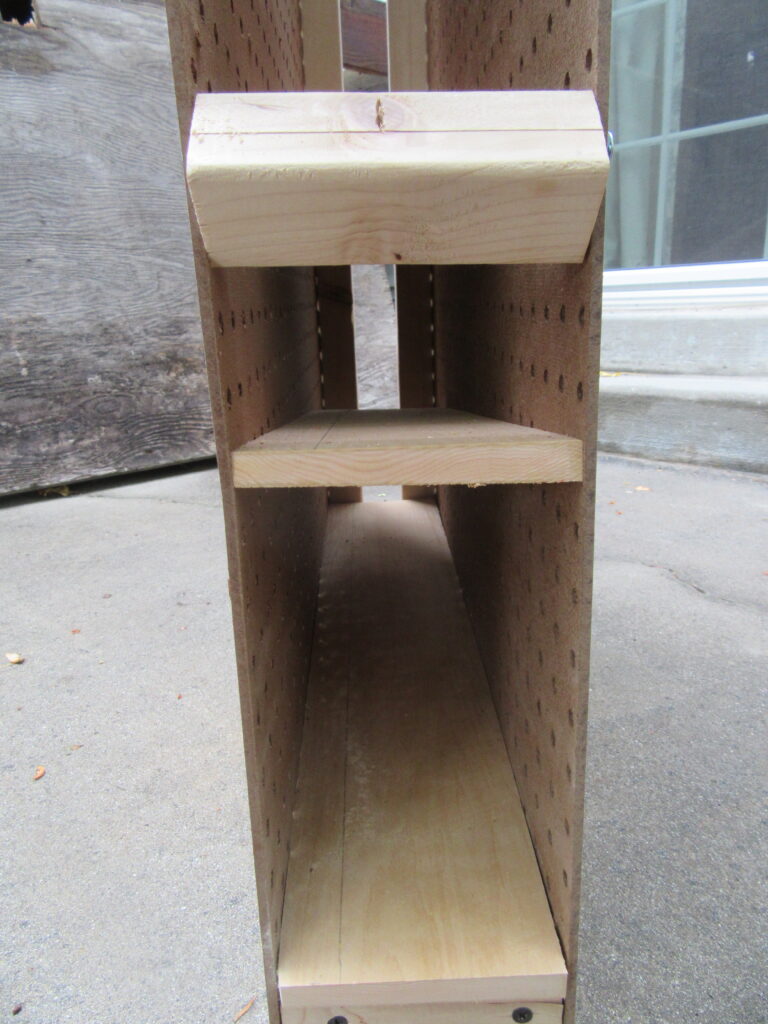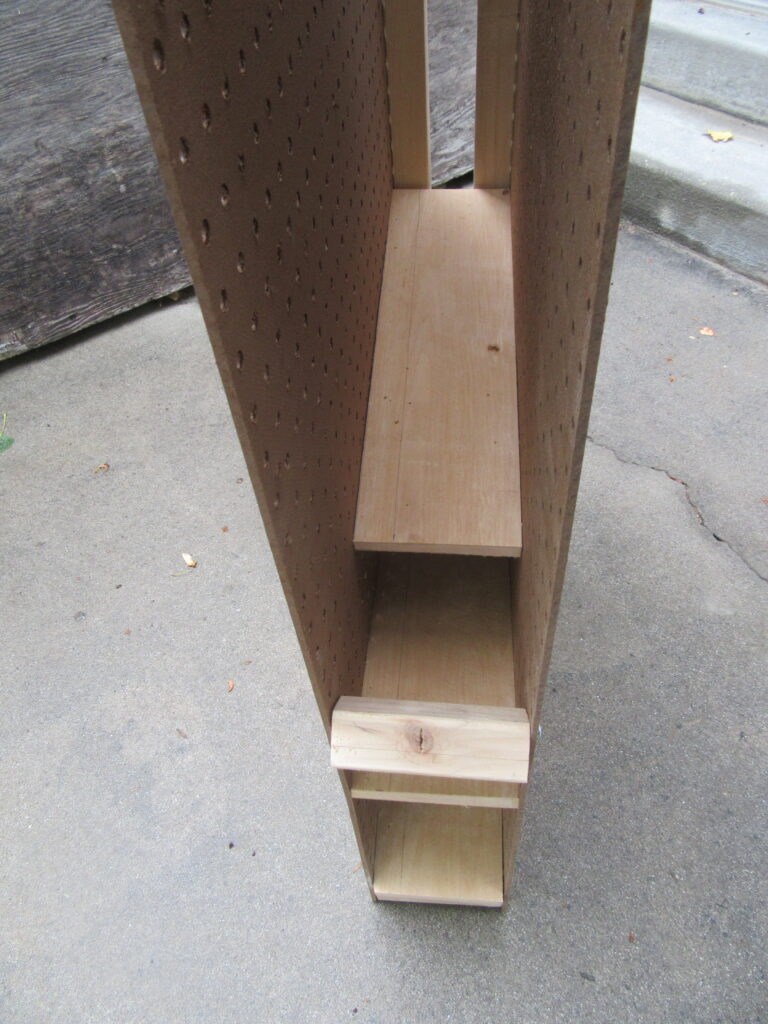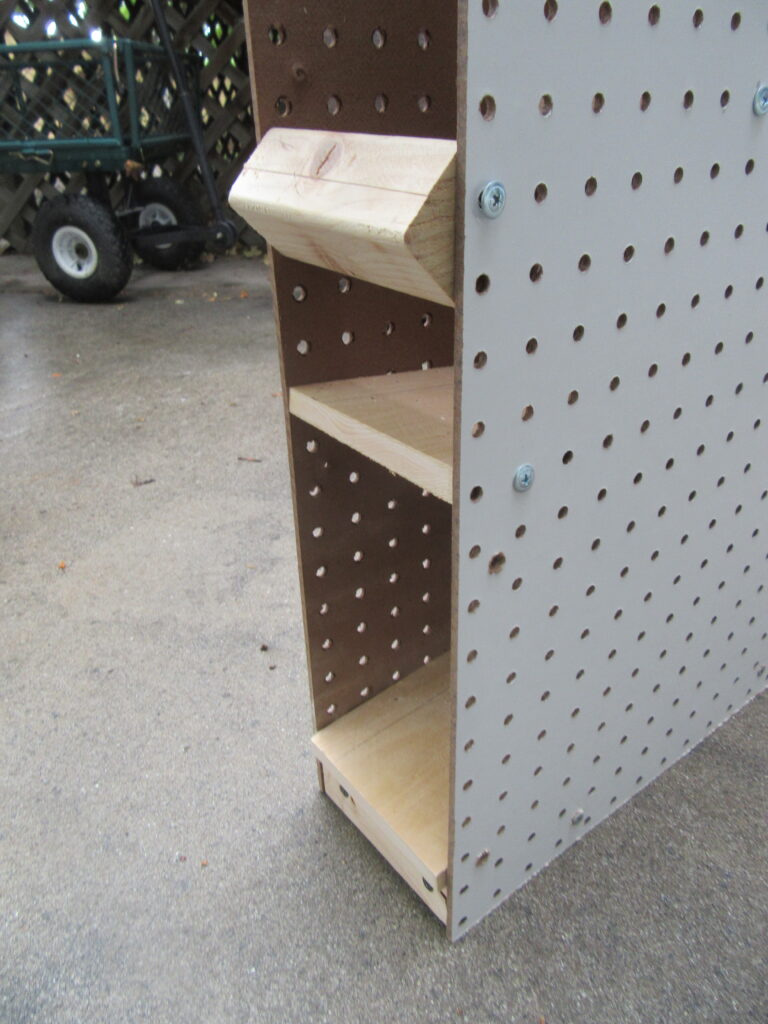I was able to get out and work on my canned goods storage/rotation system this weekend and finished my prototype unit. Here’s how it turned out:
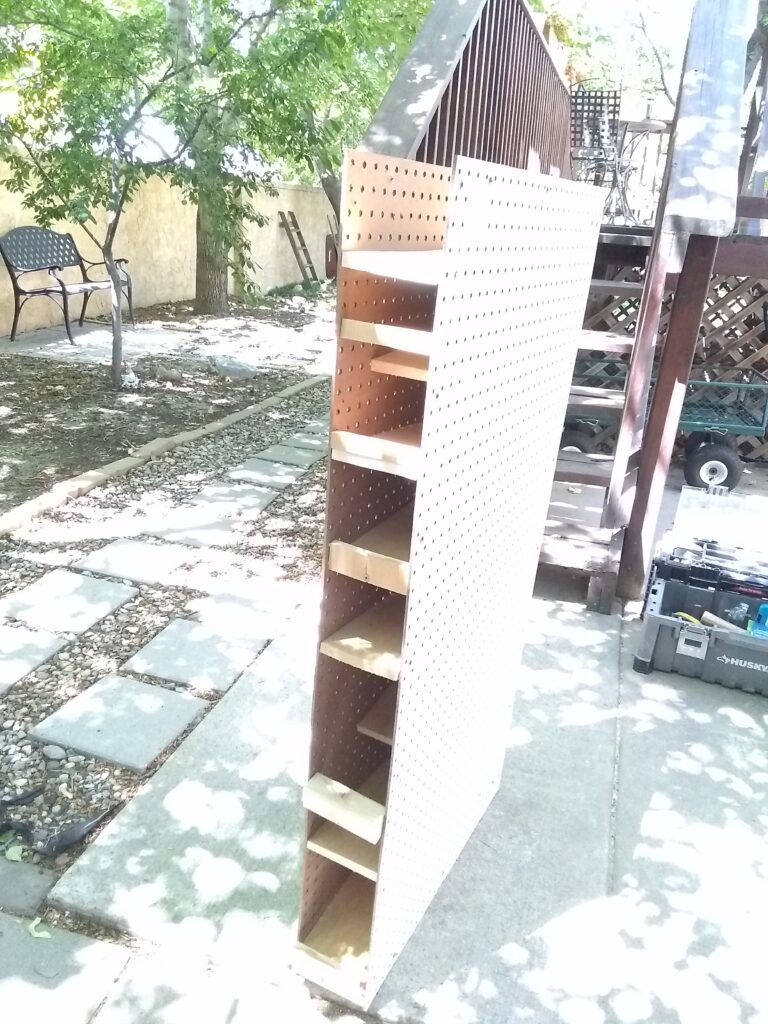
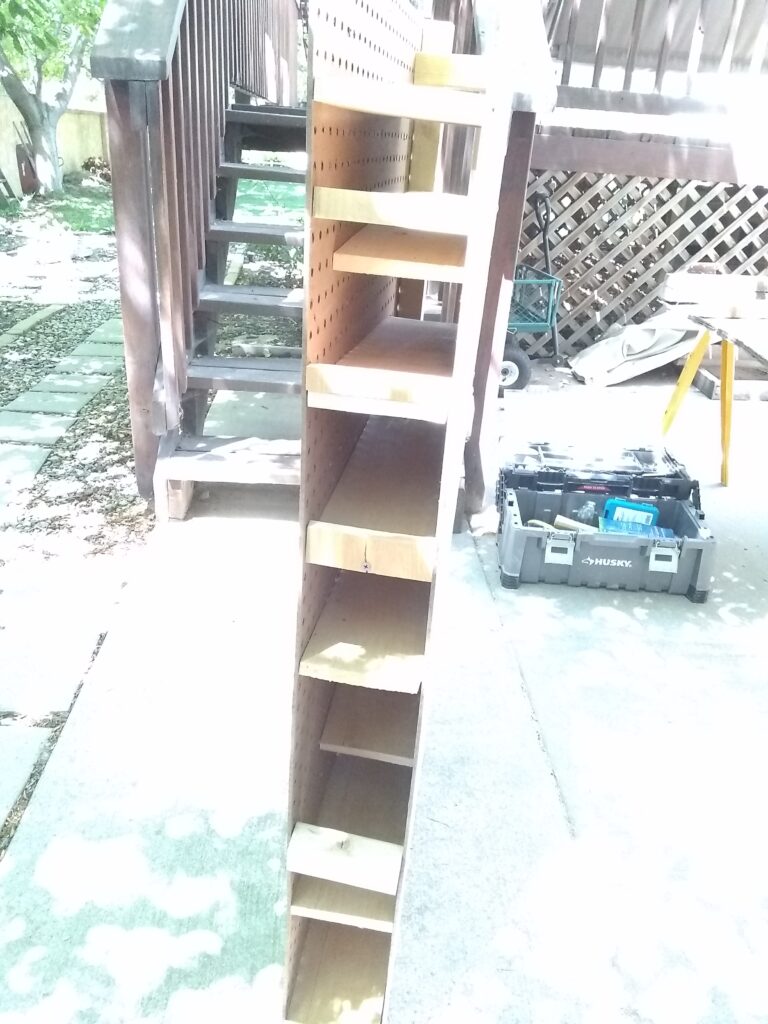
The pictures aren’t the best; my apologies. As you can see, though, it’s still rough, still…a prototype.
What I ended up with holds two types of cans, 28 oz. cans in the lower half, 14.5 oz. cans in the upper half. I did this because it was clear after the first half that I wouldn’t be able to fit four more levels of the 28 oz. cans in my unit, so I decided to try how many levels of the smaller cans would fit.
I realized pretty quickly that I would not be able to fit four levels of smaller cans in the remaining space. At that point I was slanting the shelves at a 2-inch slant front-to-back, so I tried reducing that to a 1-inch slant. I also lowered a few of the bigger can shelves to that slant as well. As it was, I still couldn’t make it all fit. There wasn’t room to put the cans in at the top, as there was still the 2×2″ support beams across the top, even when I tried laying the very top shelf flat instead of the usual slant.
Next I tried taking the 2×2’s out, figuring at that point I had enough shelves screwed in across the sides to stabilize the unit. That worked. I suppose at that point I could/should have added a slant to the top shelf, but I didn’t. I was more concerned about how well the unit would hold up.
My next step was to take the unit down into our basement and see how many cans I could fit in it, if the gravity feed would work correctly, and if it would hold up. Sorry I didn’t get pictures of that. But I can tell you that the bottom half holds 20 of the larger cans. It does have some difficulties feeding, which I will need to work out. It’s not a big deal, but it does involve reaching into the unit to clear the blockages.
As far as the smaller cans, the upper section held twelve of those just in the first two shelves, with room for at least one more. I didn’t add more, as I didn’t want to add a different vegetable at that point. Not having a slant on the top shelf is an annoyance, as you have to manually push the cans to the back before they begin to feed. I’ll definitely have to fix that, as my current plan for the storage room will put that shelf up near the ceiling, making it hard to push.
All in all, the unit was sturdy enough to hold the weight. If anything, loading it with cans made it more sturdy. The feeding is the primary issue. The transition from an upper shelf to a lower shelf is one issue that can likely be addressed in the next iteration.
The other problem is that the cans rub against the sides and the friction slows them down or stops them altogether. For that I blame the materials I’m using, at least for now.
Pegboard has two sides, a white, smooth side and a brown rough side. I went for appearances and put the smooth side out. In reality, when these are lined up next to other units you won’t even see the outside surface. On the next test I’ll put the smooth side inside, which should reduce the friction against the cans. When the slant on the shelves was 2″ the friction wasn’t nearly as big an issue, but reducing that to 1″ lessens the pull of gravity. I don’t think I can get by making the slant steeper, so I’ll have to find other ways to help overcome friction from the sides.
A third issue, related to the second, was that occasionally the shelves were too narrow, and when screwed into the sides they pulled the sides in too much, narrowing the passage enough to catch the cans. I hope to have better tools by the time I try the next prototype and be able to get more uniform cuts to my wood.
I’m still impressed with the versatility of the pegboard. The ability to see through the walls, so to speak, is invaluable, as is the ability to move shelves around without having to drill new holes in the walls. I’m hoping to find a way to position the screw holes in the sides of the shelves more uniformly in the future as well so the shelves will be more level side-to-side.
I also plan to experiment with having less support structure. If I cut the shelves uniformly they should provide lots of stability to keep the tower from leaning. I may be able to get by using 1×2″s along the back instead of 2×2″s without losing any stability, and at this point I’m not sure I even need any support along the bottom and top edges, which may open up more vertical space for shelving. I’m really hoping I can make this work with good efficiency using standard sizes (ie. 2’x4′ pegboard panels) to minimize waste. If I have to make each unit 4.5 to 5 feet tall, for example, I’ll have to cut 4’x8′ sheets to size, which will waste the last three feet of pegboard.
The biggest success I’m seeing so far is the potential efficiency in storage and rotation. While a series of shelf a la Donkey Kong isn’t entirely efficient, it’s more efficient than standard shelves. Being able to line these units up side by side will increase our storage capacity considerably, and make rotation much less work. I’m excited to move on to Phase Two of this project in finalizing the design I’ll then start “mass producing,” as well as getting a final idea of cost. It appears so far that I’m spending about $30-35 per unit, but I’m hoping to pin that down tighter.
Stay tuned!

